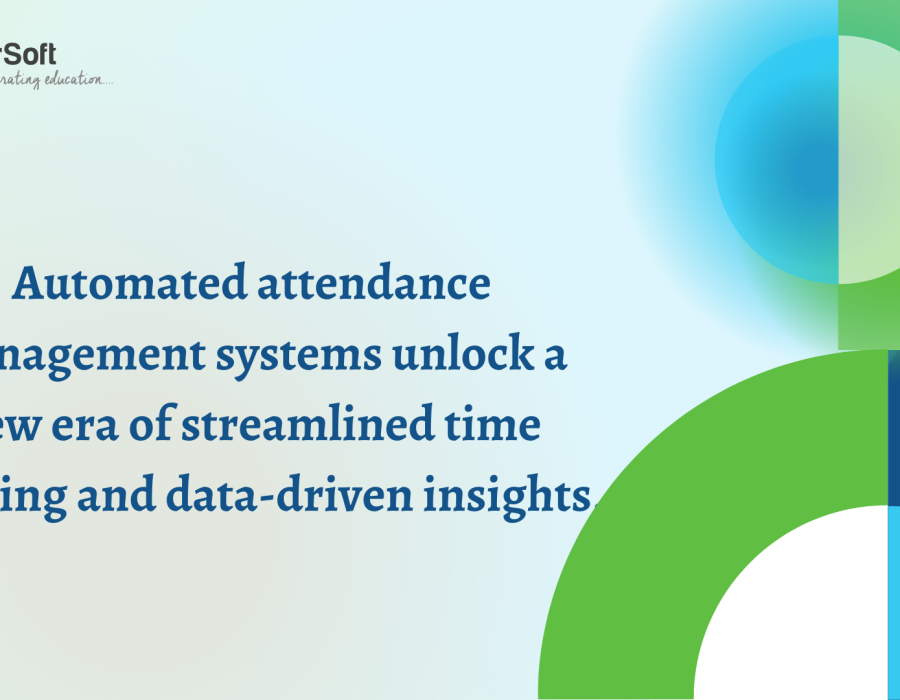In today's fast-paced business environment, managing employee attendance effectively is crucial for maximizing productivity and minimizing costs. Traditional paper timesheets and manual tracking methods are not only time-consuming but also prone to errors. This is where Attendance Management System (AMS) come in.
Most people associate AMS with simply clocking in and out. However, modern AMS solutions offer a wealth of advanced features that go far beyond basic timekeeping. This blog delves into these advanced functionalities, exploring how they can streamline HR processes, boost employee engagement, and enhance workforce management.
Advanced Features of Attendance Management System
1. Biometric Authentication:
Gone are the days of buddy punching (clocking in for absent colleagues). Modern AMS utilizes biometric authentication methods like fingerprint scanners, facial recognition, or iris scans. This ensures accurate timekeeping and eliminates the risk of time theft.
2. Geofencing and Location Tracking:
For businesses with mobile workforces, some AMS offer geofencing capabilities. Geofencing allows you to define a virtual boundary around your workplace. When employees clock in or out within the designated area, the system validates their location. This can be particularly beneficial for remote employees or those with flexible work schedules.
3. Integrated Scheduling and Leave Management:
Modern AMS often integrates seamlessly with existing scheduling and leave management systems. This allows employees to submit leave requests, view their schedules, and track their remaining vacation or sick leave days directly through the AMS platform. This streamlines the process for both employees and HR personnel.
4. Overtime Management and Alerts:
Manually calculating overtime can be a tedious and error-prone task. Advanced AMS automatically tracks regular hours worked and flags overtime instances. This empowers businesses to manage overtime expenses effectively and ensures employees receive fair compensation for their time. Additionally, some systems can be configured to send alerts to both employees and managers when overtime thresholds are approaching.
5. Real-Time Reporting and Data Analytics:
Modern AMS provide real-time access to attendance data. This allows managers to monitor attendance trends, identify patterns of absenteeism or tardiness, and make informed decisions regarding staffing and scheduling. Advanced analytics features can also be used to identify areas for improvement within the organization's work culture and attendance policies.
6. Employee Self-Service Portal:
Many AMS offer an employee self-service portal. This allows employees to easily access their timesheets, view their accrued time off, and even swap shifts with colleagues (subject to manager approval). This not only saves HR time but also empowers employees to take control of their work schedules and manage their time effectively.
7. Mobile App Accessibility:
The ability to clock in and out using a mobile app is a valuable feature for businesses with a mobile workforce. Employees can easily track their hours on-the-go, regardless of their location. Mobile app access also allows for real-time communication between employees and HR personnel regarding attendance-related issues.
8. Integrations with Payroll Systems:
Seamless integration between your AMS and payroll system can significantly reduce administrative burden. Accurate and timely attendance data is automatically transferred to the payroll system, ensuring error-free payroll processing.
The Benefits of Implementing Advanced Attendance Management Features
1. Enhanced Accuracy and Reduced Time Theft:
Biometric authentication and other advanced features minimize human error and combat time theft, leading to cost savings for the company.
2. Improved Efficiency and Streamlined Processes:
Automation of tasks like overtime calculations, leave management, and reporting frees up valuable time for HR personnel and allows them to focus on more strategic initiatives.
3. Increased Employee Engagement and Morale:
Empowering employees with self-service options and mobile app access fosters a sense of trust and transparency. Additionally, accurate timekeeping practices ensure employees receive fair compensation, leading to improved morale.
4. Data-Driven Decision Making:
Real-time data and analytics empower managers to make informed decisions regarding staffing, scheduling, and workforce management strategies.
5. Improved Compliance with Labor Regulations:
Many industries have labor regulations regarding work hours and breaks. Advanced AMS features can help businesses comply with these regulations by automatically tracking employee work hours and breaks.
Choosing the Right Attendance Management System for Your Needs
- Size and Complexity of Your Business: Consider the number of employees you need to manage and the complexity of your work schedules. Choose a system that scales to accommodate your needs.
- Features and Functionality: Identify the functionalities that are most important to your business, such as biometric authentication, mobile app access, and integration capabilities.
- Budget: AMS solutions come with varying costs. Determine your budget and choose a system that offers value for money.
- Ease of Use: The system should be user-friendly for both employees and HR personnel. Consider factors like interface design, training requirements, and mobile accessibility.
- Security: Ensure the AMS prioritizes data security with robust encryption and access control measures to protect employee data.
The Future of Attendance Management
The future of attendance management is undoubtedly mobile and data-driven. As technology continues to evolve, we can expect even more innovative features, such as:
- Artificial Intelligence (AI) and Machine Learning (ML): AI and ML can be used to identify patterns in attendance data and predict potential issues, such as absenteeism or scheduling conflicts.
- Wearable Technology Integration: Integration with wearable technology like smartwatches can provide even more granular data on employee activity and well-being.
- Advanced Analytics and Workforce Insights: Enhanced analytics capabilities will provide deeper insights into workforce trends and patterns, allowing businesses to optimize staffing and resource allocation.
Conclusion: Invest in an Advanced Attendance Management System
Implementing an Attendance Management System with advanced features is not just about tracking employee hours. It's about streamlining processes, improving accuracy, empowering employees, and gaining valuable data to make informed decisions about your workforce. In today's competitive business environment, investing in an advanced AMS is a smart move that can boost productivity, reduce costs, and enhance employee engagement. So, ditch the paper timesheets and embrace the future of attendance management!





Comments